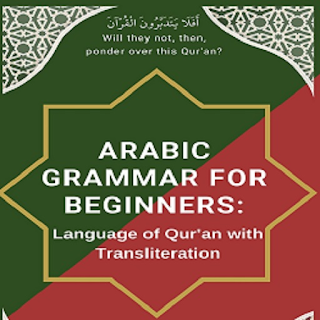6.1/6.2/6.3 - Numbers/Rules for 1-10/Rules for 11-99
Section 6.1 – الْأَعْدَادُ Numbers (al aa’daa-du)
Arabic numbers are translated as عَددٌ (Adadun) and the associated Noun is called a مَعْدُوْدٌ (ma-dood).
Section 6.2 - Rules for counting from 1 through 10
1) number one and two are not used when counting. For example, كِتابٌ kitaa-bun for one book, كِتَابَانِ ki-ta-baa-ni for two books.
2) For numbers 3-10, عَدَدٌ ada-dun is used with مَعدُوْدٌ ma’doo-dun and it is always in a Genitive state (مَجْرُوْرٌ maj-roo-run). For example, for three books, ثَلَاثَةٌ كُتُبٍ (thalaa-tha-tun ku-tu-bin) and for four books, أرْبَعَةٌ كُتُبٍ (arbaa-tun ku-tu-bin) etc. are used.
3) Note that numbers are also given genders which is probably unique to the Arabic language.
Note that a feminine عَدَدٌ ada-dun is used for a male مَعدُوْدٌ ma’doo-dun and vice versa. See tables below.
4) For emphasis, مَعْدُوْدٌ ma’doo-dun is used even for single and dual numbers. For example:
عِنْدِي سَاعَةٌ وَاحِدَةٌ (indee-saa-atun waa-hi-da-tun) meaning I have one watch and gender is now matched between Noun and number unlike before.
Table 28 - Numbers for Male Ma’dood (مَعْدُوْدٌ)
|
| Number in Arabic | The number used for masculine Ma’dood | pronounced as | Examples | Meaning |
| 1 | ١ | واحِدٌ | Waahidun | كِتابٌ
Kitaa-bun | One book |
| 2 | ٢ | اِثْنَانِ | Is-naani | كِتَابَانِ
Ki-taa-baani | Two books |
| 3 | ٣ | ثَلَاثَةٌ | Thalaa-tha-tun | ثَلَاثَةٌ كُتُبٍ
Tha-laa-tha-tun Ku-tu-bi | Three books |
| 4 | ٤ | أرْبَعَةٌ | Arba-a-tun | أرْبَعَةٌ كُتُبٍ
Ar-ba-tun ku-tu-bi | Four books |
| 5 | ٥ | خَمْسَةُ | Kham-sa-tun | خَمْسَةٌ كُتُبٍ
Kham-sa-tun ku-tu-bi | Five books |
| 6 | ٦ | سِتَّةٌ | Sit-ta | سِتَّةٌ كُتُبٍ
Sit-ta-tun ku-tu-bi | Six books |
| 7 | ٧ | سَبْعَةٌ | Sab-a-tun | سَبْعَةٌ كُتُبٍ
Sab-a-tun ku-tu-bi | Seven books |
| 8 | ۸ | ثَمَانِيَةٌ | Sama-nia-tun | ثَمَانِيَةٌ كُتُبٍ
Tha-maa-ni-ya-tun ku-tu-bi | Eight books |
| 9 | ٩ | تِسْعَةٌ | Tis-a-tun | تِسْعَةٌ كُتُبٍ
Tis-a-tun ku-tu-bin | Nine books |
| 10 | ١٠ | عَشَرَةٌ | Ash-ra-tun | عَشرَةٌ كُتُبٍ
Ash-ra-tun ku-tu-bin | Ten books |
Table 29 - Numbers for Female مَعْدُوْدٌ (Ma-dood)
|
| Number in Arabic | The number used for feminine | pronounced as | Examples | Meaning |
| 1 | ١ | واحِدَةُ | Wahi-datun | كِتابٌ
Ki-taa-bun | One watch |
| 2 | ٢ | اِثْنَتَانِ | Is-na-taani | كِتَابَانِ
Kitaa-baa-ni | Two watches |
| 3 | ٣ | ثَلَاثٌ | thalaa-tha-sun | ثَلَاثَتٍ سَاعَاتٍ
Thalaa-tha-tin sa-aa-tin | Three watches |
| 4 | ٤ | أرْبَعٌ | Arba-un | أرْبَعٌ سَاعَاتٍ
Ar-ba-un saa-aa-tin | Four watches |
| 5 | ٥ | خَمْسٌ | Kham-sun | خَمْسٌ سَاعَاتٍ
Kham-sun saa-aa-tin | Five watches |
| 6 | ٦ | سِتٌ | Sit-tun | سِتٌ سَاعَاتٍ
Sit-tun saa-aa-tin | Six watches |
| 7 | ٧ | سَبْعٌ | Sab-un | سَبْعٌ سَاعَاتٍ
Sab-un saa-aa-tin | Seven watches |
| 8 | ۸ | ثَمَانٌ | Samaa-nun | ثَمَانٌ سَاعَاتٍ
Tha-maa-nun saa-aa-tin | Eight watches |
| 9 | ٩ | تِسْعٌ | Tis-un | تِسْعٌ سَاعَاتٍ
Tis-un saa-aa-tin | Nine watches |
| 10 | ١٠ | عَشَرٌ | Ash-run | عَشرٌ سَاعَاتٍ
Ash-run saa-aa-tin | Ten watches |
Section 6.3 - Rules for counting from 11 through 20
1) Numbers 11 through 19 are always compounds and its مَعدُوْدٌ ma’doo-dun is always a singular with fathah.
2) This method continues up to number 99.
3) For 11 and 12, if (مَعدُوْدٌ ma’doo-dun) is male then number will be male, and if it is female, then number will also be female. For example, كِتَابًا عَشَرَ أَحَدَ (ahada asharaa kitaa-ban) meaning 11 books and كِتَابًا اِثْنَا عَشَرَ (ithna-ashara-kitaa-ban) meaning twelve books.
4) From 13 through 19, the original rule of female (مَعدُوْدٌ ma’doo-dun) for male (عَدَدٌ ada-dun) and male (مَعدُوْدٌ ma’doo-dun) for female (عَدَدٌ) is applied.
Table 30 - Numbers 20 through 90
| Number | Number in Arabic | pronounced as |
| 20 | عِشْرُوْنَ | Ish-roona |
| 30 | ثَلَاثُوْنَ | thala-thoona |
| 40 | أَرْبَعُوْنَ | Arba-oona |
| 50 | خَمْسُوْنَ | Khams-oona |
| 60 | سِتُّوْنَ | Sit-toona |
| 70 | سَبْعُوْنَ | Sab-oona |
| 80 | ثَمَانُوْنَ | thama-noona |
| 90 | تِسْعُوْنَ | Tis-oona |
Table 31 - Numbers 100 through 1000,000
| Number | Number in Arabic | pronounced as |
| 100 | مِائَةٌ | May-atun |
| 200 | مِائَتَانِ | May-atani |
| 300 | ثُلَاثُ مِائَةٍ | Thulaa-thu may-atin |
| 400 | أَرْبَعُ مِائَةٍ | Arba-u may-atin |
| 500 | خَمْسُ مِائَةٍ | Khamsu may-atin |
| 600 | سِتُّ مِائَةٍ | Sittu may-atin |
| 700 | سَبْعُ مِائَةٍ | Sab-aa may-atin |
| 800 | ثَمَانِيْ مِائَةٍ | Thama-nia may-atin |
| 900 | تِسْعُ مِائَةٍ | Tis-u may-atin |
| 1000 | ألْفٌ | Al-fun |
| 10, 000 | عَشَرَةُ آلَافٍ | Ash-ratu aa-la-fin |
| 100, 000 | مِائَةُ أَلْفٍ | May-atu al-fin |
| 1000, 000 | مِلْيُوْنٌ | Mil-yu-nun |
Section 6.2 - Week Days اَيَّامُ الْأُسْبُوْعِ
Table 32 – Weekdays
| weekday
| Pronunciation | Week |
| اَلسَّبْتُ | As-sab-tu | Saturday |
| اَلأَحَدُ | Al-aha-du | Sunday |
| الاِثْنَيْنُ | Al-ith-nai-ni | Monday |
| اَلثُّلَاثَاءُ | Ath-thalaa-thaa-u | Tuesday |
| اَلاَرْبِعَاءُ | Al-arbi-aa-u | Wednesday |
| الْخمِيْسُ | Al-khamee-su | Thursday |
| الْجُمْعَةُ | Al-jum-atu | Friday |
***





Comments